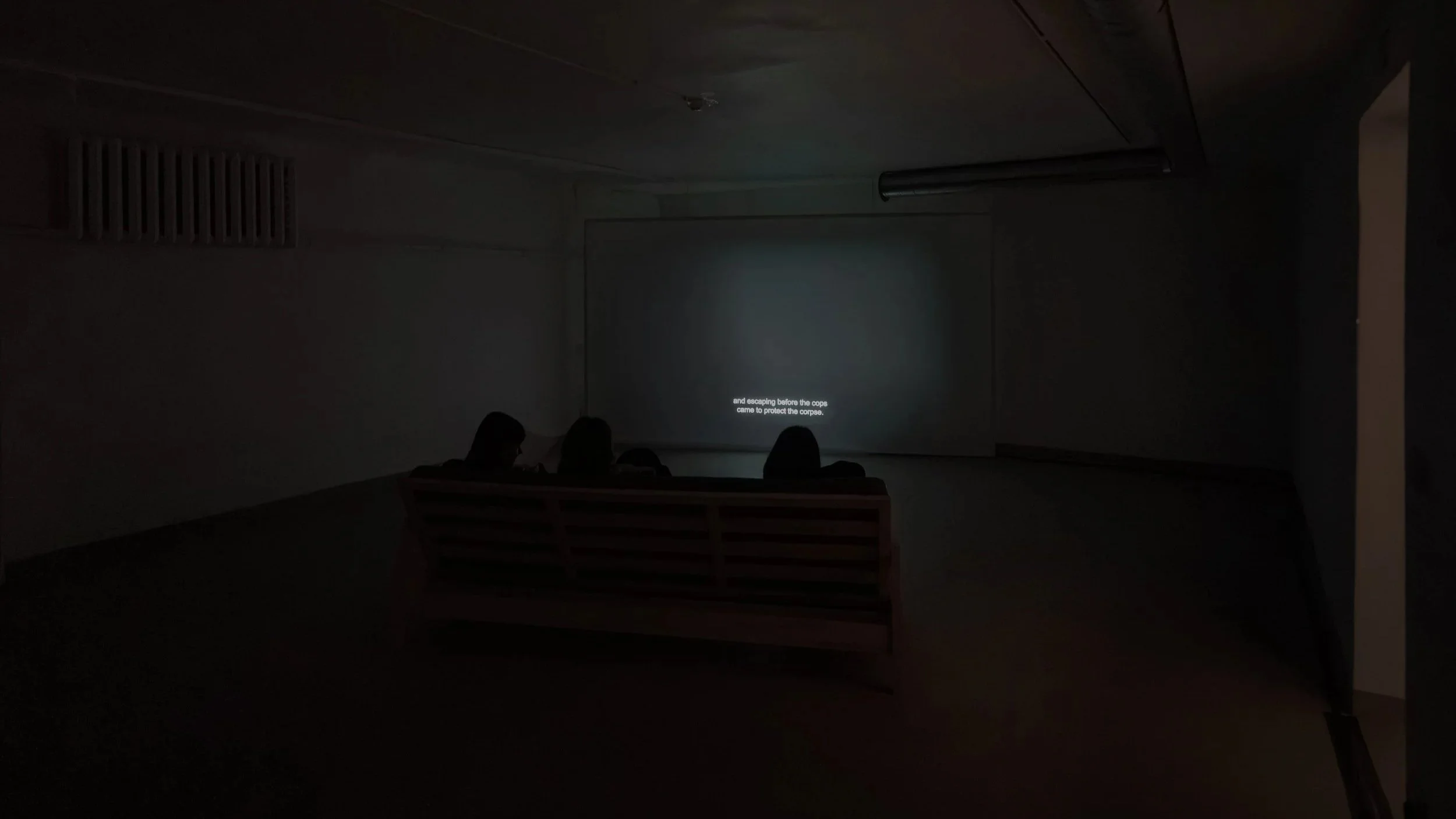CV, email, newsletter, instagram
Artist based in New York primarily making films through writing and speaking. Current research focuses on administration and necrophilanthropy. Solo and group presentations. Some grants, awards. Jobs in classrooms, offices, galleries. Organizing otherwise. Tired of artist bios. (October 2025)
Don’t hesitate to reach out for screeners/documentation of anything not public below.
select works
Funding Body, 2025, US/LT. 6-minute video (b/w, sound).
Emerging from a study project on necrophilanthropy, Funding Body tells the story of an artist seeking institutional support.
Installation view at Rupert, Lithuania. Photo by Andrej Vasilenko.
2013 or 2025 or Fuck It All, 2025, LT. 20-minute site-specific play with 4 performers at Rupert, Vilnius, November 2025.
A partial adaptation of an unrealized play written about the host institution in 2013, expanding here into new dialogues on critique, funding, and struggle.
Blackboard / Yellowscreen, 2025, US. 10-minute video (color, sound).
Blackboard / Yellowscreen centers on an interview with writer, programmer, and activist Rosa Martinez, speaking in the middle of their trial as part of the CUNY 8. Facing up to seven years in prison for their alleged actions at a Palestine solidarity encampment in New York, Rosa reflects on their personal relationship to educational institutions alongside broader issues of resistance, discipline, and the carceral university. The title of this black-yellow flicker film might conjure divergent political, technological, affective, and pedagogical associations. Ultimately, both the flicker and the voiceover probe one’s need or desire to look away.
Sunset Seduction, 2024-ongoing, US. 45-minute video (color, sound, audio description, open captioning) with artist contract and extended discussion.
trailer here, contact for full work. documentation of 2024-25 contracts in-progress.
Sunset Seduction stars a liberal philanthropist yearning for his next fling with radical politics. Made as the Palestine solidarity movement escalated in 2024, the work unfolds in essayistic fragments considering ideas of freedom, violence, and the seductive capture of revolutionary ideology. Sunset Seduction is an evolving project centered on a 45-minute film alongside site-specific contracts and discussions, together aiming to materialize the particular responsibilities of cultural workers in the global north.
Mission Drift, 2023, US. 13-minute video (b/w, sound, audio description, open captioning) with extended audience discussion.
excerpt here, contact for full version. zine by Emily Rose Apter published by cinemóvil nyc and distributed via Printed Matter.
Mission Drift follows a nonprofit art gallery worker who tries to stay afloat when a horny sadomasochistic philanthropist infiltrates the organization. The work surveys insufficiencies across commercial, nonprofit, academic, and DIY institutions, its tragic narrative taking aim at the seductive nature of contemporary philanthropy, pointing toward the need to constantly reinvent strategies against mechanisms of capture. The medium of Mission Drift is described as “video and discussion:” the work may only be publicly presented if it is followed by a robust audience discussion on the issues at hand.
Interior Shot, 2023, US. 9-minute video (color, sound, audio description, open captioning).
Interior Shot is composed of my own surgery footage and breathing exam audio, alongside poetry on grief, work, luck, and time.
Hook, 2023, US/UK. Paperback book, 5x8 inches, black and white, 103 pages.
Out of print, contact me for leftover copies
At a used bookshop in Oxford, England, I found a tattered relic of local tourism/imperialism published in 1850. I liked the dismal state of the book, so I digitally scanned and deep-fried it. I’ve spent a lot of time with one particularly destroyed image, where I can still feel the spirit of a book; a line, a gesture; it looks like a hook. A hook is the part of a song that usually sticks in your head; what pierces a fish on the line to be reeled in. A hook is a method of capture. Hook is a book of poetry and images made from 2020–2023.
Exaggerations, 2022, US/UK/NL. 20-minute video (color, sound, audio description, open captioning).
A supernatural road trip in the Scottish village of Foyers, the American hamlet of Grovers Mill, and reading breaks in an Amsterdam film library. We try to pick at belief and clarity. Difficulties between loving your work, working at loving, making a living. Language piles up, crashes down, and maybe becomes something else.
Reading Time (minimum 17 minutes), 2021, UK. Video, sound, text.
Video, sound, text. Seminar room, bullet points. Narrator, gestures, QR code. Distance from white guilt, malaise. Scales of death, datedness. Zoom out, in, out (as nobody is pure, the contradictions in striving toward an ethics of practice are insurmountable). Big drop. Scream.
thank johnson i’m woke, 2019, US. 12-minute video (color, sound).
Part essay, part diary, part panic attack. A narrator attempts to attribute the gentrification of New Brunswick, New Jersey since the 1970s to the longtime stature of Johnson & Johnson’s world headquarters in the American city, but is possessed by the past civic-corporate figures in question through the urban space. The voice escapes from these appropriated reflections into personal anecdotes, emerging as a caricature of the white gentrifier.





